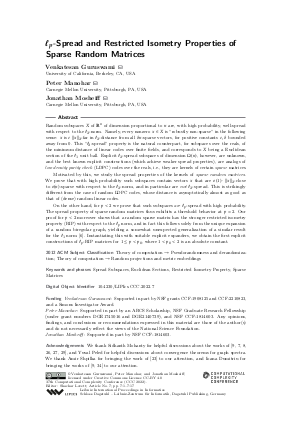LIPIcs.CCC.2022.7.pdf
- Filesize: 0.71 MB
- 17 pages

 Creative Commons Attribution 4.0 International license
Creative Commons Attribution 4.0 International license



























Feedback for Dagstuhl Publishing